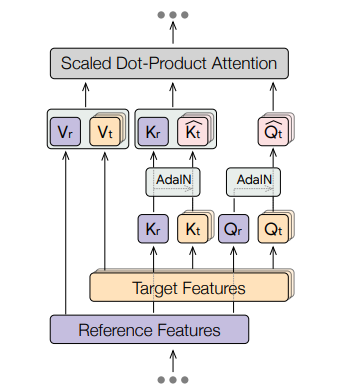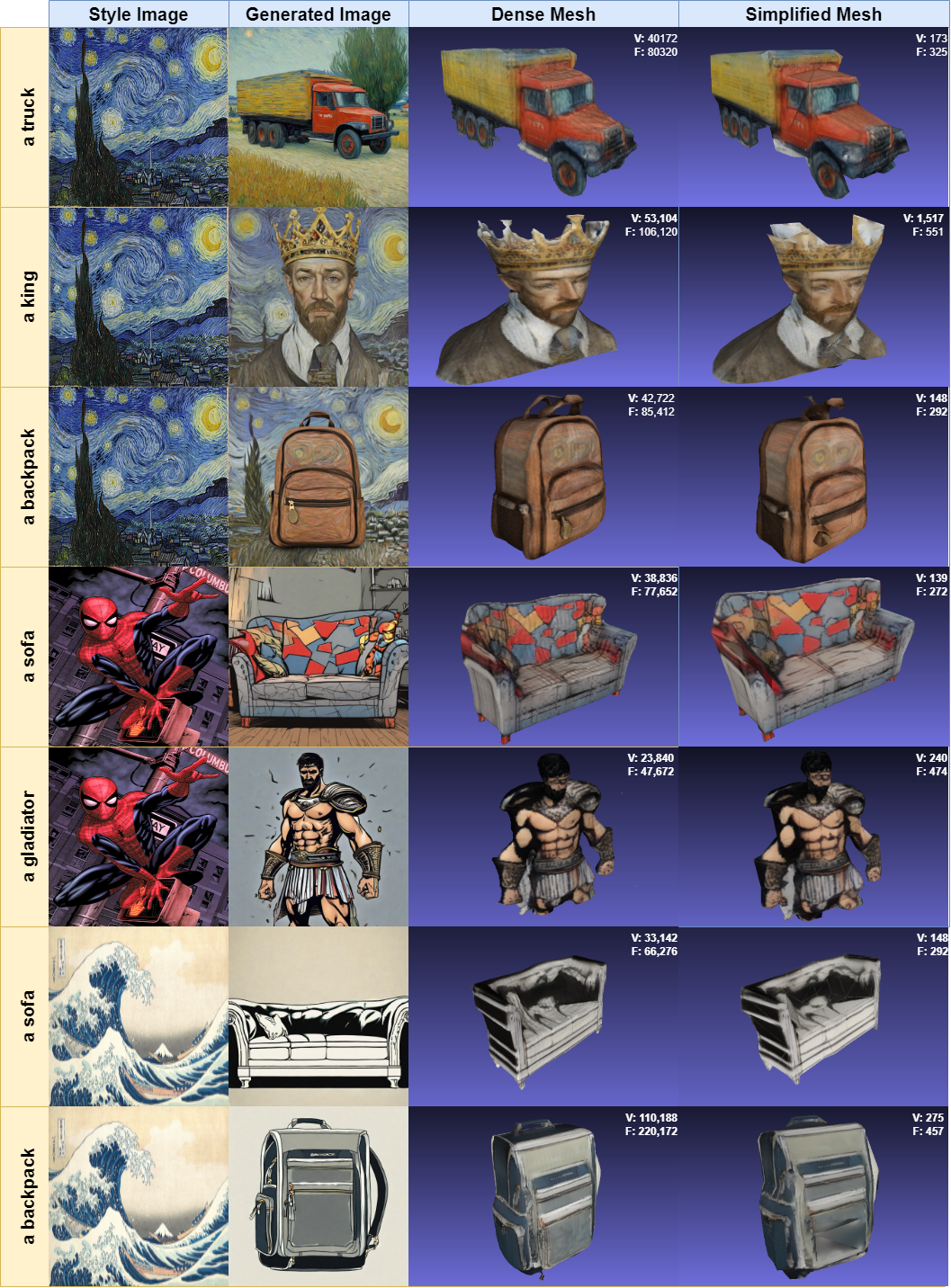
This project presents a novel pipeline for generating style-aligned, efficient 3D models from a text prompt and a reference image. It leverages three cutting-edge models:
- Style-Aligned for generating images that match a reference style
- InstantMesh for creating dense 3D meshes from images
- MeshAnything for generating artist-created, simplified meshes suitable for real-time use
The pipeline is designed to overcome two major problems in 3D generation: poor stylistic alignment and overly dense meshes.
🧠 Motivation
Modern text-to-3D systems are powerful but often fail in two key areas:
- They can’t consistently adhere to a specific artistic style.
- They generate high-poly meshes that aren’t suitable for games or interactive experiences.
This pipeline tackles both issues with modular components that work together to produce usable, stylized meshes.
🛠 Pipeline Overview
-
Style-Aligned Image Generation
Given a text prompt and style image, the Style-Aligned model outputs a reference image that reflects both the content and desired style using a shared-attention mechanism.
-
3D Mesh Generation with InstantMesh
The image is fed to InstantMesh, which uses multi-view diffusion and a ViT-based triplane decoder to create a dense 3D mesh.
-
Mesh Simplification with MeshAnything
The dense mesh is simplified using MeshAnything to generate an Artist-Created Mesh (AM). MeshAnything is trained to preserve structure while reducing polygon count.
-
Texture Transfer
Since MeshAnything does not output textures or colors, vertex colors from the dense mesh are transferred to the simplified mesh using:- ICP alignment
- UV parameterization (trivial-per-triangle)
- Barycentric interpolation in PyMeshLab
📊 Results

- Mesh complexity reduction: ~98.43%
- User-rated visual fidelity: 7.8 / 10 (from a user study)
- Final meshes are performant enough for real-time use while maintaining stylistic accuracy.
💡 Challenges
- Content shift & Janus-face effects from diffusion-based stages
- MeshAnything limitations on detail (800-face max); potential future use of MeshAnythingV2
✅ Conclusion
This project demonstrates a proof-of-concept pipeline for generating stylized, low-poly 3D models with practical use in game development and real-time rendering. As generative 3D technologies advance, this modular pipeline can evolve further by swapping components with more powerful successors.